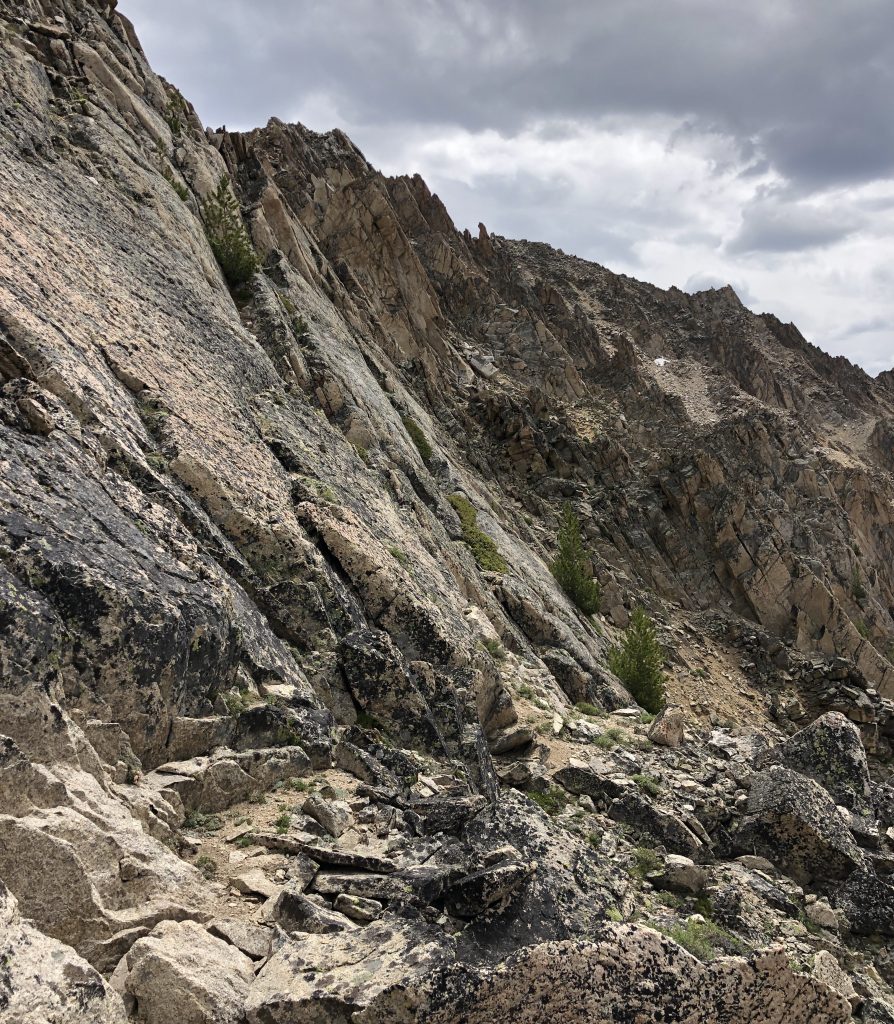Elevation: 10,857 ft
Prominence: 557

This peak is not in the book. Dave Pahlas traversed the connecting ridge from Patterson Peak. Derek Percoski traversed the connecting ridge from Lonesome Peak. Updated August 2019
Mount Frank is located northeast of Patterson Peak and is connected to that peak by a rugged ridge. Rick Baugher reports he found the unofficial named carved into a rock on the summit. USGS Boulder Chain Lakes
Access
Most people access this peak from the west via Fourth of July Creek [(A)(2) on Page 229].
Born Lakes/West Face, Class 2+
Most people climb the peak from Born Lakes via the West Face. The route crosses a lot of loose ground. It gains the ridgeline south of the summit and then follows the ridge to the summit. See Derek’s GPS track below for the general line.
Patterson Peak-to-Mount Frank Traverse, Class 3+
Dave reports: “Down-climbing the [Northeast] Ridge was more challenging and more fun than the ridge we had climbed [up Patterson] with a little exposure and a couple of short knife-edged sections. But the rock was stable and all moves were Class 3 or easier so not too difficult. The [Southwest] Ridge [of Mount Frank] itself was jagged in several places, and the North Side was steep, but fortunately we were able to cheat over to the South Side of the ridge for a while to find a way up. The route finding made for slow going at times, and it took us almost an hour to reach the summit [from Patterson].” See Dave Pahlas’ trip report for additional ascent details.
Lonesome Peak-to-Mount Frank Traverse, Class 3+
Derek reports: “After climbing Lonesome Peak, I was originally hoping to do a separate ascent of the standard route on Mount Frank. As I descended the South Ridge of Lonesome Peak, I saw that I could probably continue along the connecting ridge, start up the North Ridge of Mount Frank for a bit, then traverse the face to the standard route via intermittent shelves. Down at the saddle is where the troublesome towers started, but it was always fairly easy to find Class 3 bypasses—some required dropping lower than others. After putting in that work on the ridge, I decided to continue attempting an ascent of the North Ridge of Mount Frank. It’s Class 3 with lots of zig-zagging and very little time spent directly on the crest. I descended the standard route. Thanks to all the loose dirt in the gully, I made it from summit to grass-level in 10 minutes.”

The West Face of Mount Frank. I originally intended to traverse over to the standard route here but regained the North Ridge instead. Derek Percoski Photo

Derek’s GPS Track for Lonesome Peak and Mount Frank. This trek covers 12.4 miles with over 10,000 feet of elevation gain.
Additional Resources
Regions: EASTERN IDAHO->White Cloud Mountains
Mountain Range: White Cloud Mountains
Longitude: -114.60229 Latitude: 44.05849


